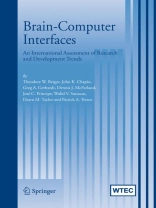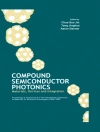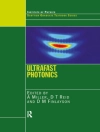We have come to know that our ability to survive and grow as a nation to a very large degree depends upon our scientific progress. Moreover, it is not enough simply to keep 1 abreast of the rest of the world in scientific matters. We must maintain our leadership. President Harry Truman spoke those words in 1950, in the aftermath of World War II and in the midst of the Cold War. Indeed, the scientific and engineering leadership of the United States and its allies in the twentieth century played key roles in the successful outcomes of both World War II and the Cold War, sparing the world the twin horrors of fascism and totalitarian communism, and fueling the economic prosperity that followed. Today, as the United States and its allies once again find themselves at war, President Truman’s words ring as true as they did a half-century ago. The goal set out in the Truman Administration of maintaining leadership in science has remained the policy of the U. S. Government to this day: Dr. John Marburger, the Director of the Office of Science and Technology (OSTP) in the Executive Office of the President, made remarks to that effect during his 2 confirmation hearings in October 2001. The United States needs metrics for measuring its success in meeting this goal of maintaining leadership in science and technology. That is one of the reasons that the National Science Foundation (NSF) and many other agencies of the U. S.
Tabla de materias
Sensor Technology.- The Biotic-Abiotic Interface.- BMI/BCI Modeling and Signal Processing.- Hardware Implementation.- Functional Electrical Stimulation and Rehabilitation Applications of BCIs.- Noninvasive Communication Systems.- Cognitive and Emotional Neuroprostheses.- Research Organization-Funding, Translation-Commercialization, and Education-Training Issues.
Sobre el autor
Dr. Theodore W. Berger (Panel Chair) is the David Packard Professor of Engineering, Professor of Biomedical Engineering and Neuroscience, and Director of the Center for Neural Engineering at the University of Southern California. He received his Ph D from Harvard University in 1976; his thesis work received the James Mc Keen Cattell Award from the New York Academy of Sciences. He conducted postdoctoral research at the University of California, Irvine, from 1977–1978 and was an Alfred P. Sloan Foundation Fellow at the Salk Institute from 1978–1979. Dr. Berger joined the Departments of Neuroscience and Psychiatry at the University of Pittsburgh in 1979, being promoted to full professor in 1987. During that time, he received a Mc Knight Foundation Scholar Award, twice received an NIMH Research Scientist Development Award, and was elected a Fellow of the American Association for the Advancement of Science. Since 1992, he has been Professor of Biomedical Engineering and Neurobiology at the University of Southern California, and was appointed the David Packard Chair of Engineering in 2003.
While at USC, Dr. Berger has received an NIMH Senior Scientist Award, was elected a Fellow of the American Institute for Medical and Biological Engineering in 1998, received a Person of the Year ‘Impact Award’ by the AARP in 2004 for his work on neural prostheses, was a National Academy of Sciences International Scientist Lecturer in 2003, and an IEEE Distinguished Lecturer in 2004–2005. Dr. Berger was elected a Senior Member of the IEEE in 2005, and received a ‘Great Minds, Great Ideas’ award from the EE Times in the same year. Dr. Berger is currently chair of an NIH study section that evaluates grants related to clinical neurophysiological, medical devices, and neural prosthetics. Dr. Berger became Director of the Center for Neural Engineering in 1997, an organization that helps to unite USC faculty with cross-disciplinary interests in neuroscience, engineering, andmedicine. He has published over 200 journal articles and book chapters, and is the coeditor of a book recently published by the MIT Press: Toward Replacement Parts for the Brain: Implantable Biomimetic Electronics as Neural Prostheses.
Dr. Berger’s research focuses on electrophysiological and theoretical studies of hippocampal neurons and circuits for the purpose of developing neural prostheses and biological-based pattern recognizers.












